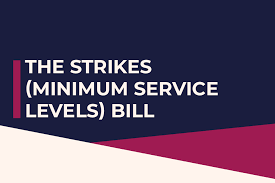Employment law in Vietnam
Employment Law in Vietnam is primarily governed by the Labor Code of Vietnam, which is designed to regulate the relationship between employers and employees in both private and public sectors. The current version of the Labor Code was amended and enacted in 2019, and it came into force on January 1, 2021. This revised version introduced several significant changes to improve worker protection, regulate working conditions, and increase employee benefits.
Key Aspects of Employment Law in Vietnam:
1. Employment Contracts
Types of Contracts:
Indefinite-term contracts: These contracts have no end date and continue until either party terminates the relationship.
Fixed-term contracts: These contracts are for a specific period and can be renewed, but generally not for more than 36 months in total.
Seasonal or temporary contracts: Used for short-term or occasional work. They usually do not exceed 12 months.
Written Contracts: Employment contracts must be written for indefinite-term or fixed-term contracts. For contracts that are not written, the labor code assumes that the contract is indefinite-term, and the employee enjoys the highest level of protection.
Trial Period: A trial period is allowed for fixed-term contracts of over 3 months and for indefinite-term contracts but must not exceed 60 days.
2. Working Hours and Overtime
Normal Working Hours: The standard working hours in Vietnam are 8 hours per day or 48 hours per week. However, the number of weekly working hours is typically 40 hours in practice for most employees.
Overtime: Overtime is permitted but is regulated under strict conditions:
The maximum overtime is 4 hours per day and 200 hours per year, though exceptions can be made in certain industries or under specific conditions (e.g., a state of emergency).
Overtime must be compensated with higher pay rates: at least 1.5 times the normal wage for regular working hours, 2 times the normal wage for overtime on holidays or rest days, and 3 times the normal wage for overtime on official holidays.
Rest Time: Employees are entitled to at least 1 day off per week (usually Sunday), but this can be negotiated if the employer requires the employee to work on that day.
3. Minimum Wage
Minimum Wage: Vietnam has a region-based minimum wage system, where different regions have different minimum wage levels. The wage levels are set by the government and typically updated annually.
As of 2023, the minimum wage varies between VND 3.25 million and VND 4.42 million per month, depending on the region. The wage may be higher for specific sectors, such as foreign-invested companies or specialized industries.
4. Leave and Holidays
Annual Leave: Employees are entitled to 12 days of paid annual leave after completing 12 months of continuous work with the same employer. Employees working in difficult conditions or with more seniority may be entitled to additional days off.
Sick Leave: Employees are entitled to paid sick leave under certain conditions. If employees are sick for more than 30 days in a year, the employer is obligated to pay a portion of the wages based on the employee's salary and length of service.
Public Holidays: Vietnam recognizes several public holidays including New Year’s Day, Vietnam National Day (September 2), Tết (Lunar New Year), Hung Kings’ Festival, and Labor Day (May 1). Employees working on public holidays are entitled to holiday pay (usually at a rate of 2 to 3 times the regular wage depending on the situation).
5. Anti-Discrimination and Equal Pay
Non-Discrimination: The Labor Code prohibits discrimination based on gender, age, disability, ethnicity, religion, and social class. Both men and women are entitled to equal pay for equal work.
Equal Pay: There are provisions in the Labor Code that require employers to provide equal pay for equal work, which means that men and women in the same position should be paid the same wage.
Pregnancy and Maternity Protection: Female employees are entitled to 6 months of maternity leave (paid at 100% of their wage) if they have worked for the same employer for at least 6 months. Employers are also prohibited from firing pregnant employees or those on maternity leave.
6. Termination of Employment
Termination with Notice: Either the employer or the employee can terminate the contract with proper notice. The notice period is typically 30 days for indefinite-term contracts, and 3 days to 30 days for fixed-term contracts, depending on the length of employment.
Grounds for Dismissal: Employers may dismiss employees for reasons such as serious misconduct, repeated violations of company policies, or reduction of workforce due to business conditions. However, the dismissal must follow legal procedures, including providing warnings and conducting investigations.
Severance Pay: Employees who are terminated without cause (e.g., layoffs or redundancies) are entitled to severance pay. The amount is calculated based on the number of years of service, with a minimum of half a month’s salary for each year of service.
7. Social Insurance and Benefits
Social Insurance: Vietnam has a comprehensive social insurance system, which covers:
Retirement and survivorship insurance (pension benefits).
Health insurance (coverage for medical treatment).
Unemployment insurance (for workers who lose their jobs through no fault of their own).
Both employers and employees must contribute to the social insurance fund. The total contribution rate is around 32.5% of the employee's monthly salary, with the employer contributing about 21.5% and the employee contributing about 10%.
Health Insurance: Health insurance is mandatory, and both employees and employers contribute to this fund.
Unemployment Insurance: Employees contribute a portion of their monthly wage (usually 1%) to an unemployment fund.
8. Trade Unions and Worker Representation
Trade Unions: Workers have the right to join trade unions in Vietnam, and these unions play an important role in protecting workers' rights, including negotiating labor contracts, salaries, and working conditions.
Collective Bargaining: In Vietnam, trade unions have the right to engage in collective bargaining on behalf of employees to secure better wages, benefits, and working conditions. Workers can form or join unions as long as they follow legal procedures.
9. Health and Safety
Workplace Safety: Employers are required to provide a safe working environment by ensuring the safety and health of employees. This includes regular inspections, proper equipment, and compliance with safety regulations.
Workplace Accidents: If an employee suffers a workplace injury or illness, they are entitled to workers' compensation, which includes coverage for medical expenses and partial wage replacement.
10. Foreign Workers and Employers
Foreign Workers: Foreign nationals wishing to work in Vietnam must obtain a work permit. Work permits are typically valid for 2 years and are required for most foreign employees, especially for positions that involve professional skills.
Work Permits: To be eligible for a work permit, foreign workers must meet certain educational and professional qualifications. Employers must apply for work permits on behalf of foreign employees.
Foreign Investment: Foreign investors in Vietnam are required to comply with the Labor Code and related regulations regarding employment. They must ensure that their business complies with local labor laws, including hiring local workers where possible.
11. Labor Disputes and Resolution
Labor Disputes: If a labor dispute arises, the parties involved (employer and employee) can attempt to resolve the issue through mediation. If mediation is unsuccessful, the dispute may be taken to a labor arbitration council or court.
Dispute Resolution: Labor dispute resolution mechanisms aim to handle disagreements efficiently, ensuring that the rights of both employers and employees are respected and protected.
Conclusion:
Employment law in Vietnam has undergone significant updates and reforms with the Labor Code of 2019, which became effective in 2021. Key features include enhanced worker protection regarding wages, leave, overtime, termination, and health insurance. The code aims to balance the rights of workers with the interests of employers, especially in terms of labor relations, employee benefits, and social security contributions. The system continues to evolve with ongoing improvements in worker protection and working conditions in line with international standards.









0 comments